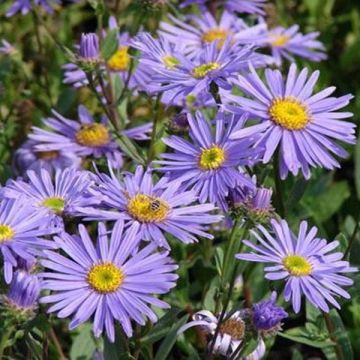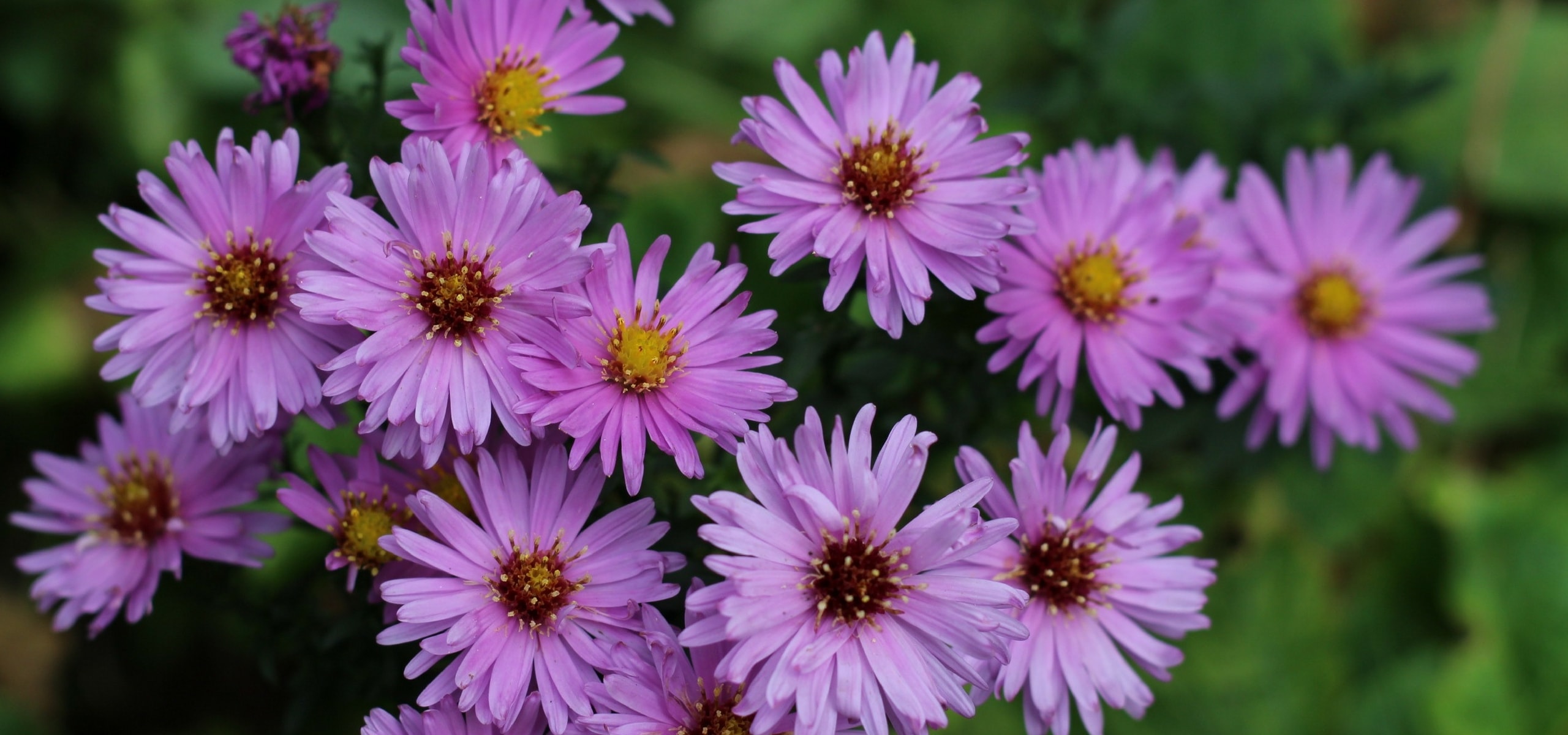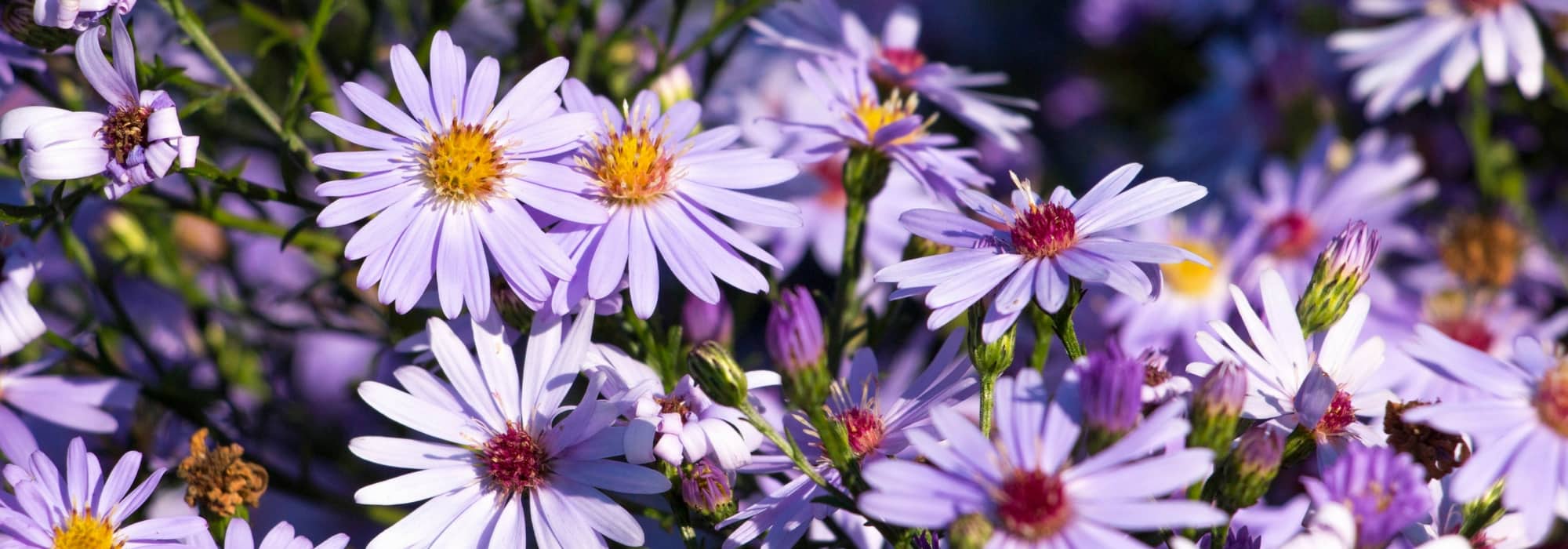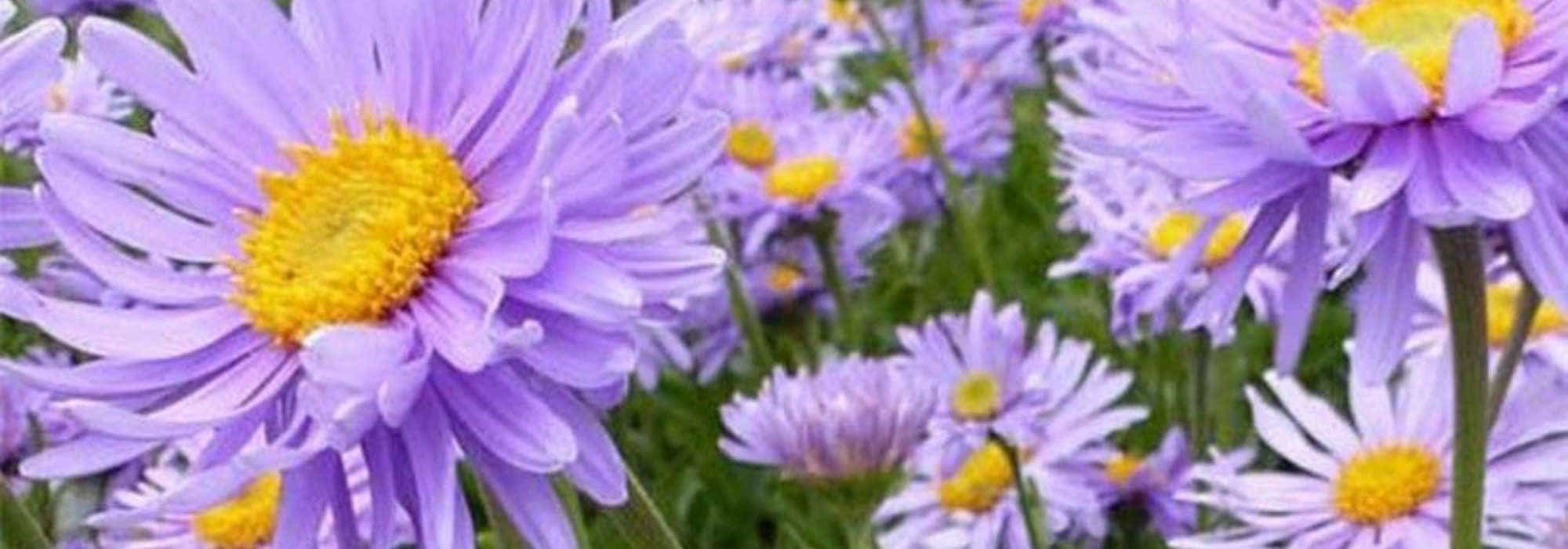

Aster ageratoides Ezo Murasaki
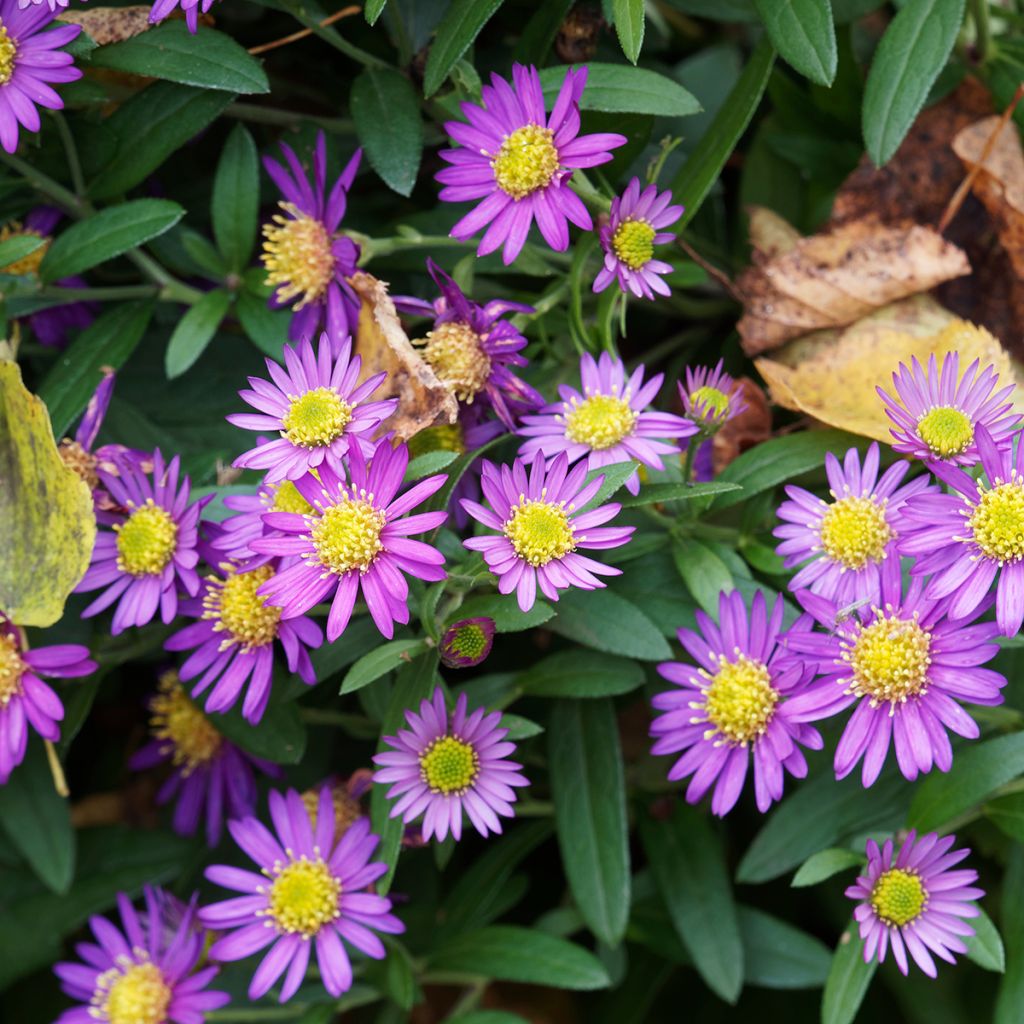

Aster ageratoides Ezo Murasaki


Aster ageratoides Ezo Murasaki


Aster ageratoides Ezo Murasaki


Aster ageratoides Ezo Murasaki


Aster ageratoides Ezo Murasaki


Aster ageratoides Ezo Murasaki
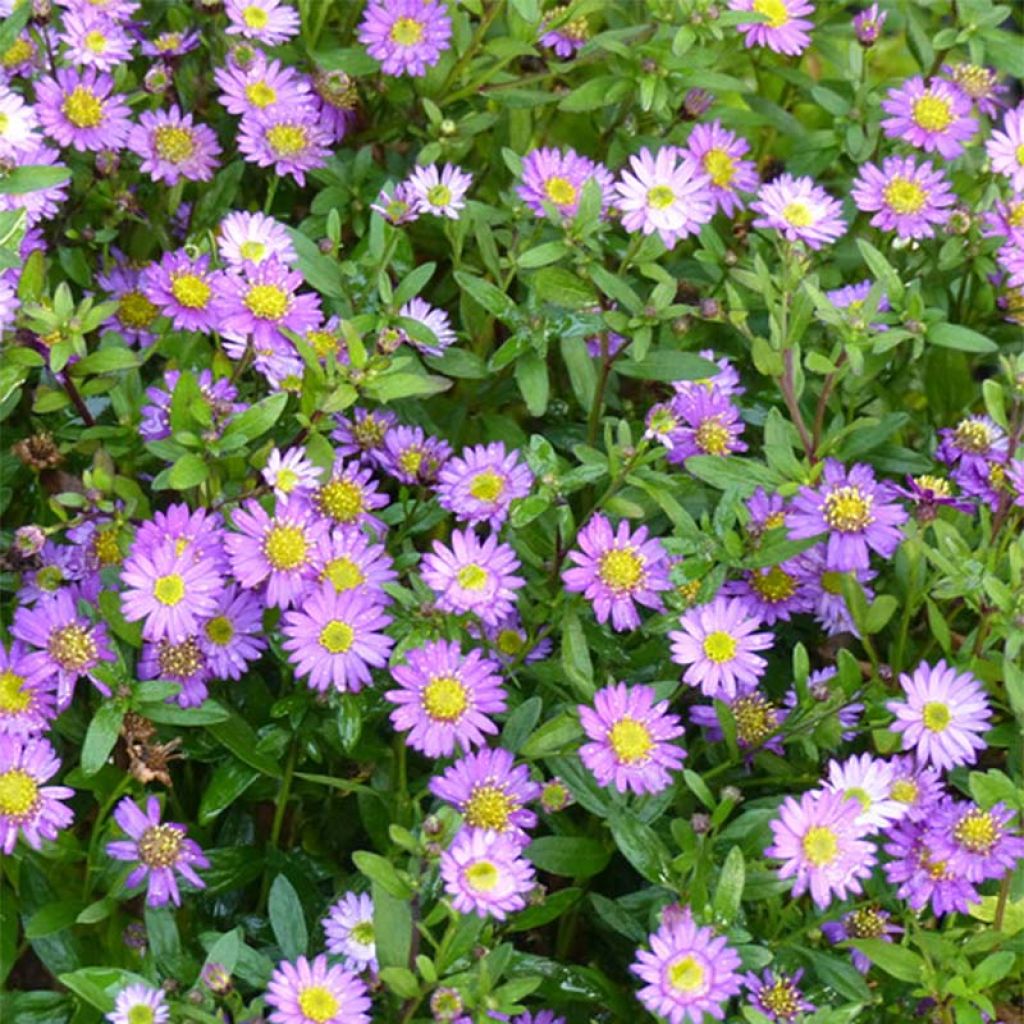

Aster ageratoides Ezo Murasaki
View more pictures
Hide images

Hélène G.

Aster in October, 1 year after planting
Hélène G. • 34 FR

Claudine F.

Claudine F. • 92 FR
Aster ageratoides Ezo Murasaki
Aster ageratoides Ezo Murasaki
Aster
Really well recovered, they produced lots of flowers this year.
Thomas, 14/03/2024
Special offer!
Receive a €20 voucher for any order over €90 (excluding delivery costs, credit notes, and plastic-free options)!
1- Add your favorite plants to your cart.
2- Once you have reached €90, confirm your order (you can even choose the delivery date!).
3- As soon as your order is shipped, you will receive an email containing your voucher code, valid for 3 months (90 days).
Your voucher is unique and can only be used once, for any order with a minimum value of €20, excluding delivery costs.
Can be combined with other current offers, non-divisible and non-refundable.
Home or relay delivery (depending on size and destination)
Schedule delivery date,
and select date in basket
This plant carries a 12 months recovery warranty
More information
We guarantee the quality of our plants for a full growing cycle, and will replace at our expense any plant that fails to recover under normal climatic and planting conditions.

Would this plant suit my garden?
Set up your Plantfit profile →
Description
The Aster ageratoides var. ageratoides 'Ezo Murasaki' is an exceptional perennial, a fearless aster, prolific and resistant to powdery mildew, flowering even when it freezes. This recent Japanese variety blooms very late, in October-November, in the form of small daisies with a purple-violet colour and a golden heart, which bring a touch of colour and lightness to the flowerless beds of summer. The plant develops from a sucker stump, and its not very tall stems are sturdy in bad weather. It is an ideal plant for large beds to suppress weeds and in a large garden that leaves room for nature!
The Aster ageratoides is a creeping perennial plant native to northern Myanmar, southwestern China, and Tibet. It belongs to the Asteraceae family. The 'Ezo Murasaki' variety, originating from Japan, is distinguished by its very late flowering and relatively compact habit. This plant develops from a sucker stump and forms a very regular clump of upright, stiff, and close-set stems that do not require staking. They bear small, somewhat rough, deciduous foliage and a matte dark green colour. The mature plant will form a bushy and round clump 60 cm (24in) tall but will spread laterally to cover the ground over more than 2 meters (7 feet) if its enthusiasm is not tempered. Very late in the season, in October, and sometimes until December, countless medium-sized flowers appear, even when temperatures drop below 0°C (32°F). These are compound inflorescences in heads composed of a crown of violet ligules surrounding a central disc occupied by fertile florets with golden-yellow stamens.
With its somewhat wild temperament, this Ezo Murasaki aster often invades the space it is given, but it is a beautiful plant that flowers even in dry shade. Plant it in any soil; it tolerates poor quality soil like fill soil or compact, clayey soils. For example, the garden can be associated with Miscanthus, Calamagrostis, garden chrysanthemums, Aster Tataricus Jindai, and Persicaria. It will grow and flower even in shaded situations, such as near a shrub bush. Its exuberant and light flowering attracts the last pollinating insects. The flowering stems are very pretty in a vase, in a floral arrangement, in the company of hellebores.
The genus Aster offers a large number of species, represented by a multitude of flowering varieties. There are varieties of all sizes in an extremely rich range of colours. Each season, several species are associated.
Aster ageratoides Ezo Murasaki in pictures




Flowering
Foliage
Plant habit
Botanical data
Aster
ageratoides
Ezo Murasaki
Asteraceae
Aster
Aster trinervius subsp. ageratoides
Cultivar or hybrid
Other Asters
View all →Planting and care
Plant the Ezo Murasaki Aster ageratoides in any ordinary soil; it even accepts poor quality soil such as compact and clayey soils. But if it adapts to lean and relatively dry soils, it will require fertilisation in April, more frequent watering in summer, and mulching to maintain freshness at its base. In mass planting, respect a spacing of at least 50 cm (20in) between the plants. Cut back the clump to 10 cm (4in) at the end of flowering to maintain a compact habit. Divide the clumps every 2 to 3 years to keep vigorous stumps and propagate this wonderful plant throughout the garden. If necessary, limit the plant's development by separating the shoots on the periphery of the stump.
Plant it in a sunny location that will allow it to express its full potential, although it also tolerates shade. Its robust foliage seems to be very resistant to powdery mildew, even in hot weather. Its only requirement is not to compete with other perennials with a strong root system. Prune dry branches in winter.
Planting period
Intended location
Care
Planting & care advice
-
, onOrder confirmed
Reply from on Promesse de fleurs
Similar products
Haven't found what you were looking for?
Hardiness is the lowest winter temperature a plant can endure without suffering serious damage or even dying. However, hardiness is affected by location (a sheltered area, such as a patio), protection (winter cover) and soil type (hardiness is improved by well-drained soil).

Photo Sharing Terms & Conditions
In order to encourage gardeners to interact and share their experiences, Promesse de fleurs offers various media enabling content to be uploaded onto its Site - in particular via the ‘Photo sharing’ module.
The User agrees to refrain from:
- Posting any content that is illegal, prejudicial, insulting, racist, inciteful to hatred, revisionist, contrary to public decency, that infringes on privacy or on the privacy rights of third parties, in particular the publicity rights of persons and goods, intellectual property rights, or the right to privacy.
- Submitting content on behalf of a third party;
- Impersonate the identity of a third party and/or publish any personal information about a third party;
In general, the User undertakes to refrain from any unethical behaviour.
All Content (in particular text, comments, files, images, photos, videos, creative works, etc.), which may be subject to property or intellectual property rights, image or other private rights, shall remain the property of the User, subject to the limited rights granted by the terms of the licence granted by Promesse de fleurs as stated below. Users are at liberty to publish or not to publish such Content on the Site, notably via the ‘Photo Sharing’ facility, and accept that this Content shall be made public and freely accessible, notably on the Internet.
Users further acknowledge, undertake to have ,and guarantee that they hold all necessary rights and permissions to publish such material on the Site, in particular with regard to the legislation in force pertaining to any privacy, property, intellectual property, image, or contractual rights, or rights of any other nature. By publishing such Content on the Site, Users acknowledge accepting full liability as publishers of the Content within the meaning of the law, and grant Promesse de fleurs, free of charge, an inclusive, worldwide licence for the said Content for the entire duration of its publication, including all reproduction, representation, up/downloading, displaying, performing, transmission, and storage rights.
Users also grant permission for their name to be linked to the Content and accept that this link may not always be made available.
By engaging in posting material, Users consent to their Content becoming automatically accessible on the Internet, in particular on other sites and/or blogs and/or web pages of the Promesse de fleurs site, including in particular social pages and the Promesse de fleurs catalogue.
Users may secure the removal of entrusted content free of charge by issuing a simple request via our contact form.
The flowering period indicated on our website applies to countries and regions located in USDA zone 8 (France, the United Kingdom, Ireland, the Netherlands, etc.)
It will vary according to where you live:
- In zones 9 to 10 (Italy, Spain, Greece, etc.), flowering will occur about 2 to 4 weeks earlier.
- In zones 6 to 7 (Germany, Poland, Slovenia, and lower mountainous regions), flowering will be delayed by 2 to 3 weeks.
- In zone 5 (Central Europe, Scandinavia), blooming will be delayed by 3 to 5 weeks.
In temperate climates, pruning of spring-flowering shrubs (forsythia, spireas, etc.) should be done just after flowering.
Pruning of summer-flowering shrubs (Indian Lilac, Perovskia, etc.) can be done in winter or spring.
In cold regions as well as with frost-sensitive plants, avoid pruning too early when severe frosts may still occur.
The planting period indicated on our website applies to countries and regions located in USDA zone 8 (France, United Kingdom, Ireland, Netherlands).
It will vary according to where you live:
- In Mediterranean zones (Marseille, Madrid, Milan, etc.), autumn and winter are the best planting periods.
- In continental zones (Strasbourg, Munich, Vienna, etc.), delay planting by 2 to 3 weeks in spring and bring it forward by 2 to 4 weeks in autumn.
- In mountainous regions (the Alps, Pyrenees, Carpathians, etc.), it is best to plant in late spring (May-June) or late summer (August-September).
The harvesting period indicated on our website applies to countries and regions in USDA zone 8 (France, England, Ireland, the Netherlands).
In colder areas (Scandinavia, Poland, Austria...) fruit and vegetable harvests are likely to be delayed by 3-4 weeks.
In warmer areas (Italy, Spain, Greece, etc.), harvesting will probably take place earlier, depending on weather conditions.
The sowing periods indicated on our website apply to countries and regions within USDA Zone 8 (France, UK, Ireland, Netherlands).
In colder areas (Scandinavia, Poland, Austria...), delay any outdoor sowing by 3-4 weeks, or sow under glass.
In warmer climes (Italy, Spain, Greece, etc.), bring outdoor sowing forward by a few weeks.

































